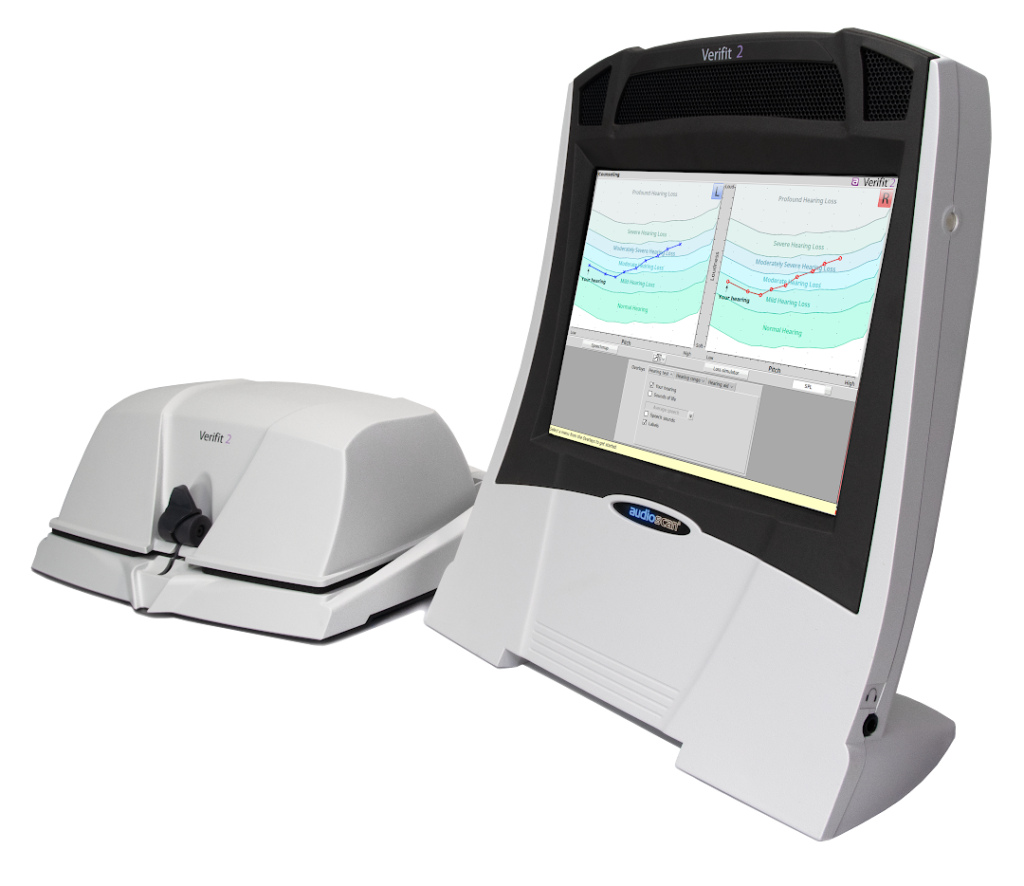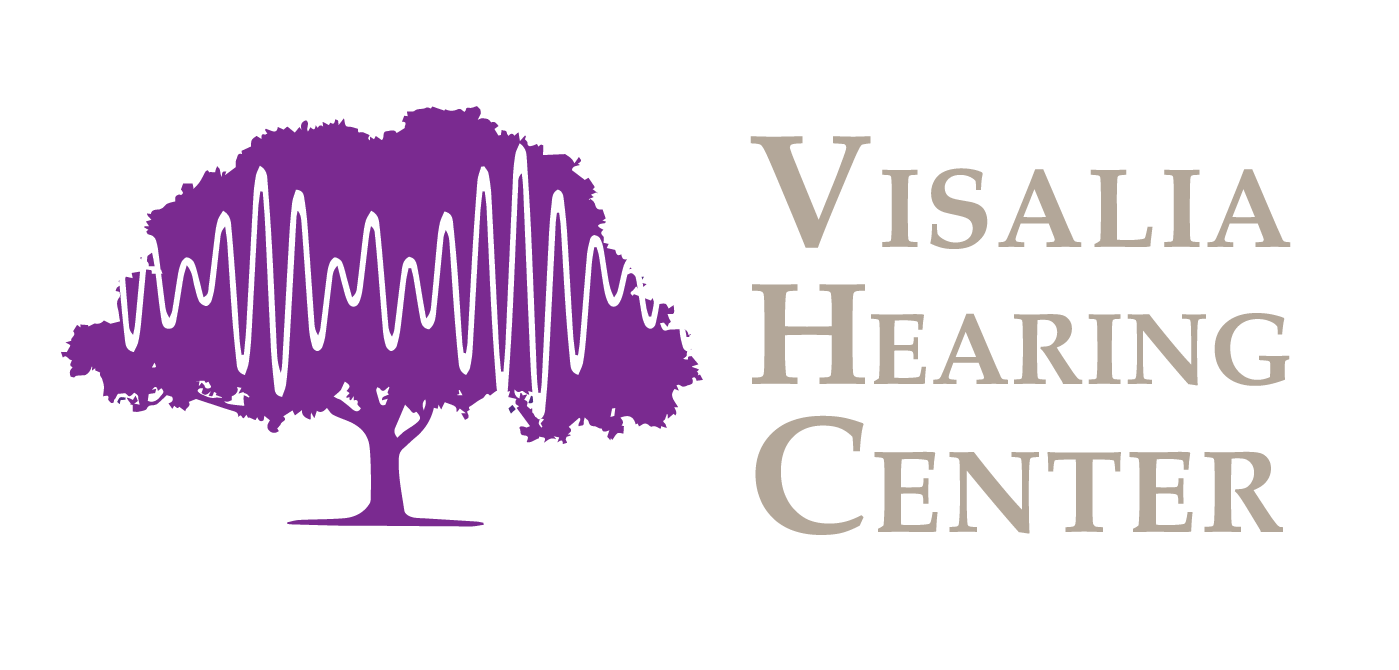
The approach to fitting hearing aids should be as unique as each individual. The team at Visalia Hearing Center understands this all too well. Led by Dr. Dan J. Finnegan, this top-rated audiology clinic leverages evidence-based techniques like Real Ear Measurements (REM) to optimize the functionality of prescriptive hearing aids, ensuring each device is tailored to the user’s specific hearing loss and ear canal acoustics
Real Ear Measurements
Real Ear Measurements, also known as probe microphone measurements or speech mapping, are THE method of verifying and ensuring that the gain/volume settings of prescriptive hearing aids are correct. This process does not merely rely on the user’s subjective perception of sound; rather, it provides an objective assessment of the sound levels delivered to the ear drum. In essence, Real Ear Measurements are tests that quantify the performance of the prescriptive hearing aids while the user is wearing the devices in their ears. Real Ear Measurements allow for the removal of all guess work from programming. Doctors of Audiology no longer have to ask, “so how does that sound?” because it is already known!

Why REMs Matter
The significance of Real Ear Measurements cannot be overstated—they are the foundation upon which all prescriptive hearing aids should be programmed. Real Ear Measurements allow Doctors of Audiology to account for the unique characteristics of each patient’s ear, including the size and shape of the ear canal. In fact, research suggests that patients prefer the settings of hearing aids that have been programmed using Real Ear Measurements. All professional Audiology Associations, including The Academy of Doctors of Audiology (ADA), the American Academy of Audiology (AAA), the American Auditory Society (AAS) & the California Academy of Audiology (CAA) endorse this practice as the gold standard for prescriptive hearing aid fittings.
Real Ear Measurements are beneficial to both patients and Doctors of Audiology. They ensure that patients are getting the boost in hearing needed for them to better communicate with friends and family. It gives evidence to Audiologists on the effectiveness of a patient’s treatment plan. More importantly, though, Real Ear Measurements embody the adage, “trust but verify.” While Visalia Hearing Center trusts our hearing aid manufacturing partners, it is our job as your Audiologist to verify that you, our patient, is in fact getting what you’re paying for.
REMs - The Procedure
Executing Real Ear Measurements is a meticulous process that involves multiple steps:
Step 1: The audiologist will inspect the patient’s ear canals to ensure there is no excess earwax or debris that could potentially interfere with the accuracy of the measurements. If there is significant ear wax, the Audiologist at Visalia Hearing Center will remove it.
Step 2: The probe tube is then inserted into the ear canal, positioned approximately six millimeters from the eardrum. If you are curious how this is done, verification equipment have sonar-like tools to ensure proper depth of the probe tube.
Step 3: With the probe tube properly placed, the audiologist will next fit the prescriptive hearing aid into the patient’s ear. This is done while being careful not to move the probe tube.
Step 4: A recorded speech passage, infamously known as “the Carrot Story,” is played, and the audiologist records and analyzes the output of the hearing aid while the hearing aid is in the patient’s ears. The results are mapped out frequency-by-frequency and compared to the patients hearing test results. If the volume is too little or too much at a certain frequency, the audiologist can make changes to maximize the amount of hearing improvement from the devices.
Step 5: The audiologist will continue this analyze-and-adjust process for multiple input levels (soft speech, average speech, loud speech) until the hearing aid settings reach optimal full-prescription strength levels.
Step 6: After documenting full-prescription strength, the volume of the hearing aids will then be set to the “training wheels program,” a volume well below full-prescription strength. This is done to smooth out the transition and help patients in getting used to amplified sound.
Step 7: Finally, the Doctor of Audiology will review the results with the patient, showing the before, after and training wheels settings. After completing this procedure, each patient will know exactly how and why their hearing aids are programmed the way they are.
This comprehensive process typically takes around 5-10 minutes per ear and leaves the patient feeling confident that their hearing care is in the hands of a team that truly wants them to hear at their best.

Real Ear Measurements at Visalia Hearing Center
The use of Real Ear Measurements is a vital part of optimizing the functionality of prescriptive hearing aids. While there are multiple Rear Ear Measurement systems available, Visalia Hearing Center utilizes the VeriFit 2 by AudioScan, which many consider the gold standard verification system.
At Visalia Hearing Center, we prioritize the use of Real Ear Measurements in each of our prescriptive hearing aid fittings. We believe that this procedure is not only a benchmark of best practices but is also in the best interest of our patients. It is one the key differentiators between a mediocre hearing center and an exceptional one. In fact, we believe that if more clinics followed best practices and routinely performed Real Ear Measurements, hearing aids would have a much better reputation.
By following best practices, like incorporating Real Ear Measurements, the team at Visalia Hearing Center is committed to ensuring that our patients get the most out of their prescriptive hearing aids. Don’t hesitate to get in touch with us if you’re interested in scheduling an appointment.
